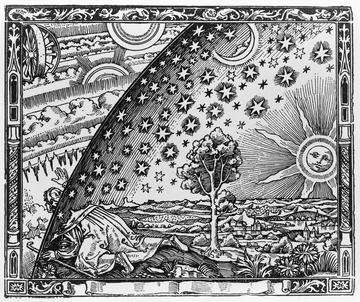Series Convenors: Dr Alex Aylward, Professor Erica Charters, Professor Mark Harrison, Dr Catherine M Jackson, Dr Sloan Mahone

Anonymous wood engraving, in Camille Flammarion, L'Atmosphère: Météorologie Populaire (Paris, 1888), pp. 163. Wikimedia Commons
Seminars in the History of Science, Medicine, and Technology
Dr Kathryn Murphy (Oxford)
The edge of the self and the limits of the world: Nathaniel Fairfax's thought experiments
This paper discusses one of the oddest productions of English philosophical prose in the seventeenth century: Nathaniel Fairfax’s The Treatise of the Bulk and Selvedge of the World (1674). Fairfax’s Treatise attempted, through critical engagement with more prominent philosophical figures such Descartes, Samuel Parker, and Henry More, to think through ‘two puzling things, the maximum quantum and the minimum’: what is the greatest extent of matter, and what the least; whether body can be infinitely extended or diminished. What is strangest about Fairfax’s discussion is less his argument for a finite world and limited extension, than his method: to write an English metaphysics, shorn of terms derived from Greek and Latin, so that, for example, space, time, extension, rationality, impenetrability, and reality become ‘roomthyness’, ‘longsomness’, ‘bulksomness’, ‘thinkfullness’, ‘unthroughfareness’, and ‘thingsomeness’. Most discussions of Fairfax dismiss his writing as quaint or eccentric; this paper argues that his linguistic oddities in fact discover in the morphological patterns of English analogies with the metaphysical world-picture for which he argues, in thought- and word-experiments which take thought to its limits.